At the recent Summer Game Fest Capcom announced the launch of Capcom Town, its new…website…online community…thing? That will act as a hub of sorts for, er, Capcom stuff of some sort. (Capcom just turned 40, so maybe it’s a midlife crisis sort of thing.)
Anyway, Capcom Town is now open to explore in your web browser, and one really interesting morsel we noticed was scans from the first Mega Man game’s design document that grant some cool insights into the classic game in its infancy.
Read More: Mega Man Composer Manami Matsumae Doesn’t Miss The 9-6 Grind
Players familiar with the original 1987 Nintendo Entertainment System (NES) game will note that not everything mentioned in these scans made it into the final release. However, some of the cut elements do show up in later games, which we’ll note as we go. So, let’s check out some highlights from this classic game’s newly released design doc.
Basic player movement and attacks
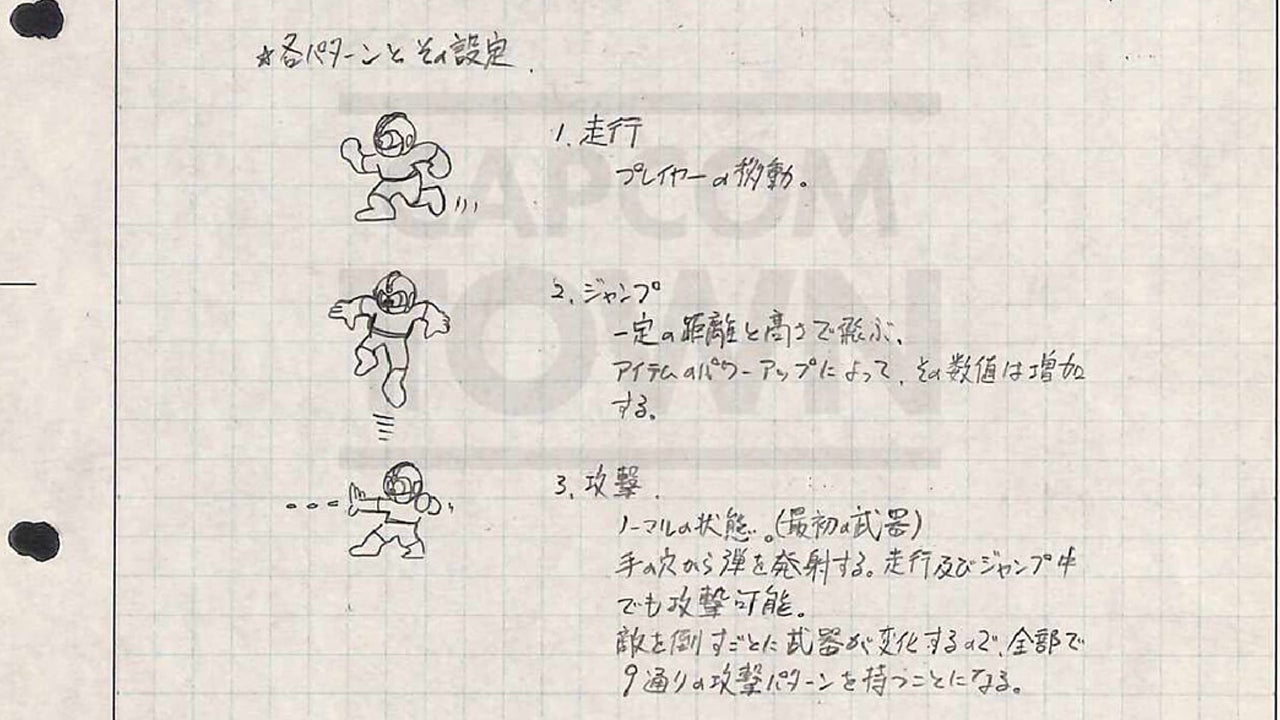
This page shows off Mega Man’s basic movement options, the first being running, then jumping, and finally attacking. According to Google Translate, this page also mentions that the weapons will be interchangeable. It mentions nine attack types, but as you may know the final game only had eight or so: your default mega buster gun, the six boss weapons, and the magnet beam that let you create platforms to jump on.
The not-quite-final cast of characters
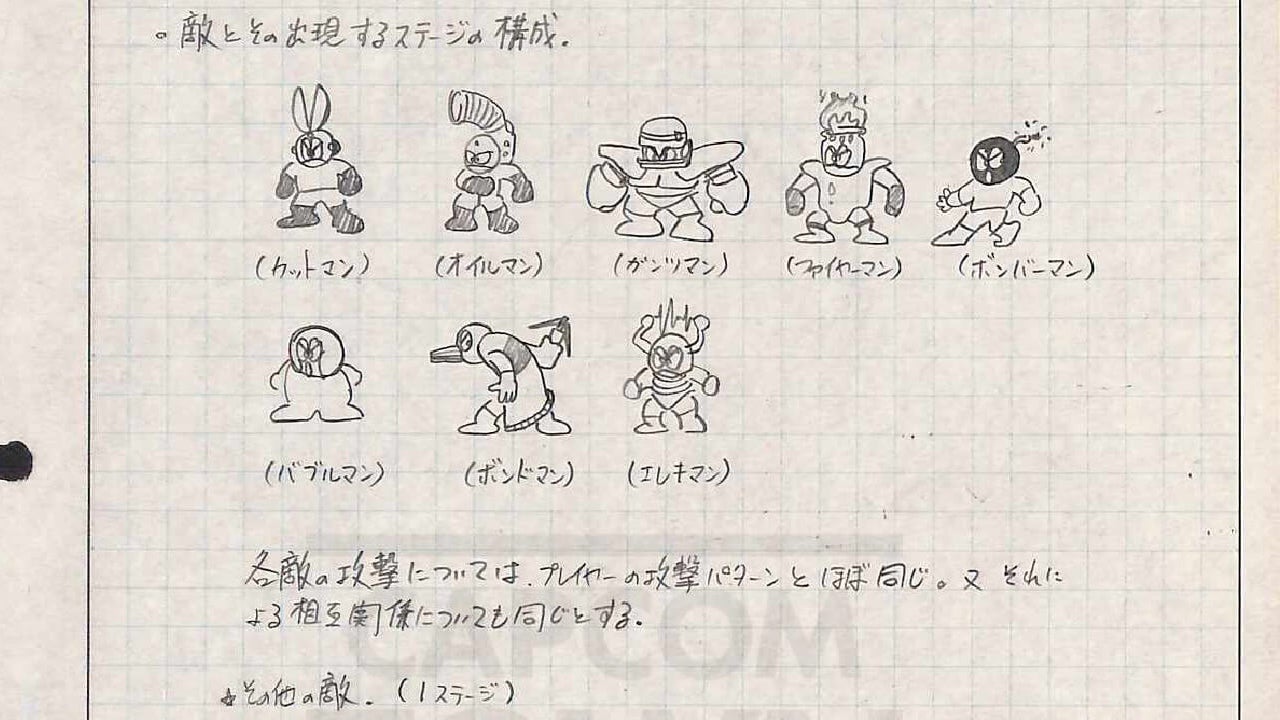
Here’s a look at the cast of characters, featuring three that didn’t make the final game. The second character on the top row is Oil Man, who was cut from Mega Man but later made his (redesigned) debut in the 2006 PlayStation Portable game Mega Man Powered Up. The first character in the second row is Bubble Man, who ended up starring in 1988’s smash-hit Mega Man 2. And the second character in the bottom row is the glue-focused Bond Man, who was just plain cut from the game and has only appeared in comics since. But based on this illustration, I’m just gonna call them Duck Man (and yes, I do envision Jason Alexander as the voice).
And notably missing? Ice Man. In the final game his weapon inherited Bond Man’s planned ability to freeze enemy characters.
Cut Man’s attack
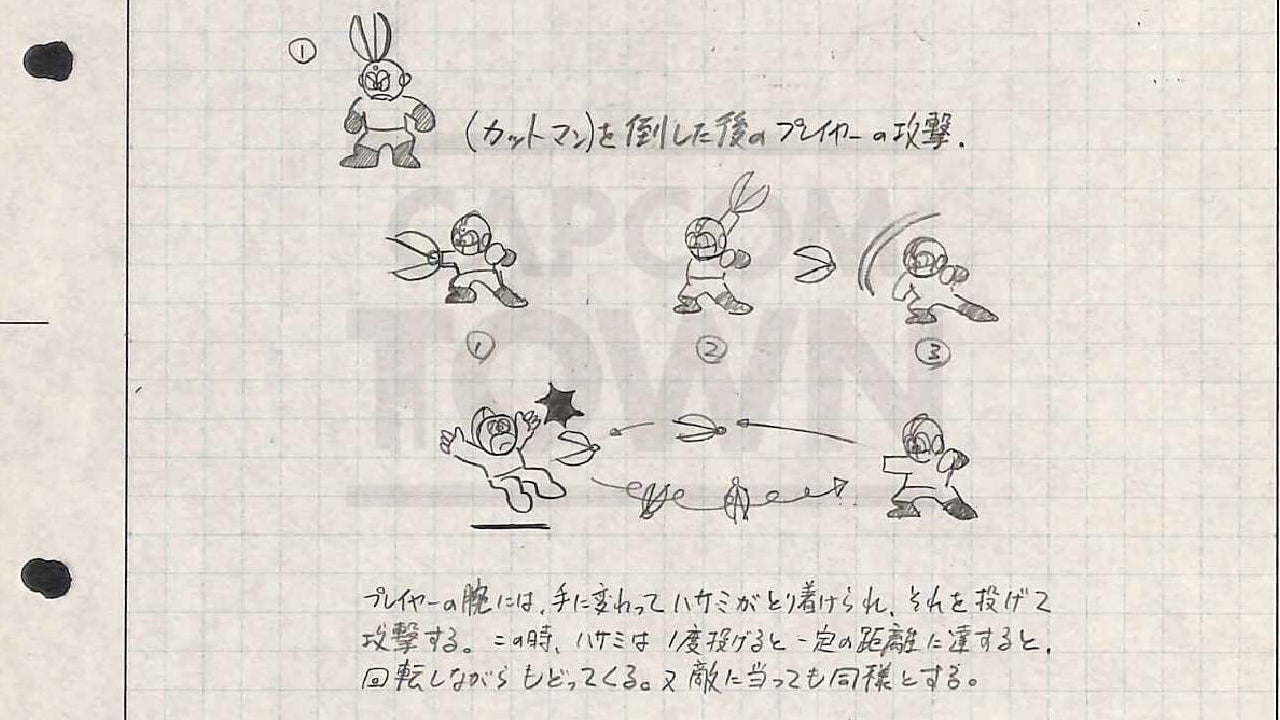
Here the document details how Mega Man will earn Cut Man’s boss weapon once he defeats that robot master. The plan was for it to travel in a curve and then return to Mega Man, which is essentially how it works in the final game. Unmentioned is how it will utterly destroy poor Elec Man in just three hits.
Horizontal health metre? Get outta here
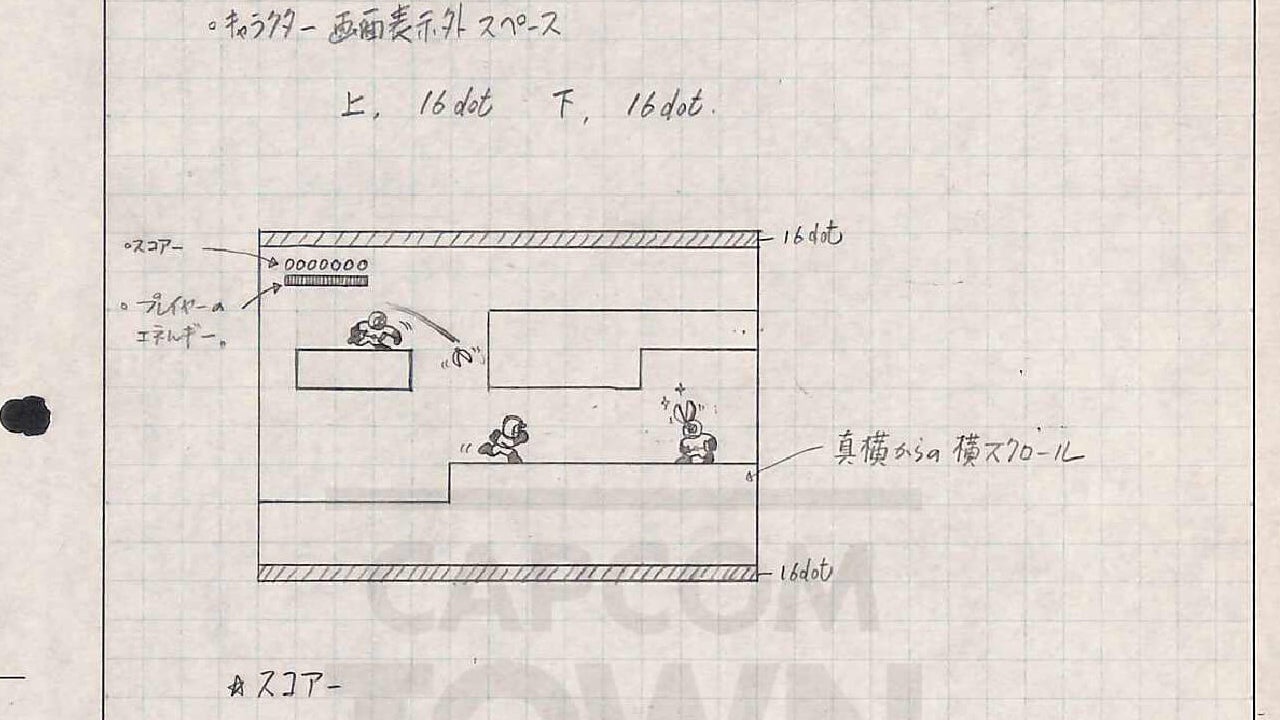
This portion of the document details what information ought to be communicated to the player via the HUD. This includes the player’s energy, as well as how the game will horizontally scroll. You can see the HUD has a score field, and indeed, this first Mega Man was the one and only game in the series to include that arcade-like element. The health metre is also horizontal, rather than the vertical layout used by the final game and most of its sequels.
Oil Man’s attack would’ve made the floor slippery
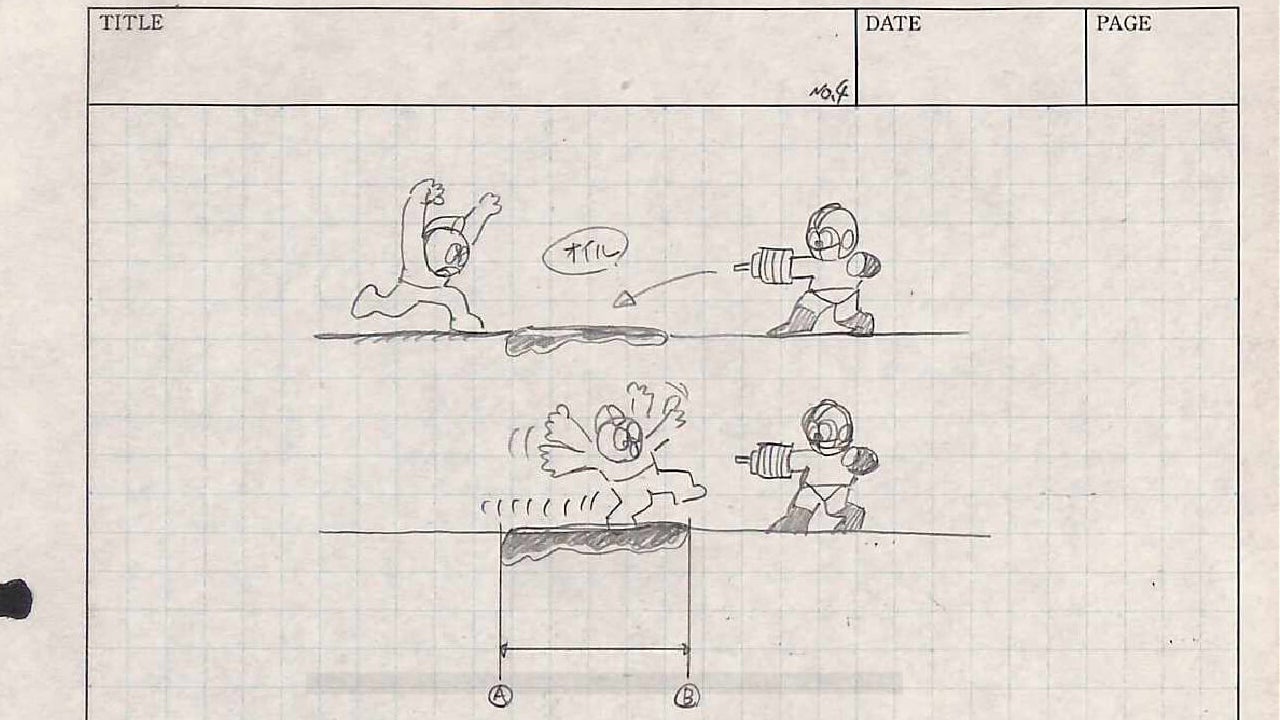
Oil Man, who wouldn’t show up in the series until 2006’s Mega Man Powered Up on the PlayStation Portable, was supposed to give Mega Man an attack that would cause foes to slip as if on ice. It’s hard to imagine how that would’ve been useful. In the final game, Ice Man’s stage had slippery floors, and that was about it.
More Oil Man details (he seems popular)
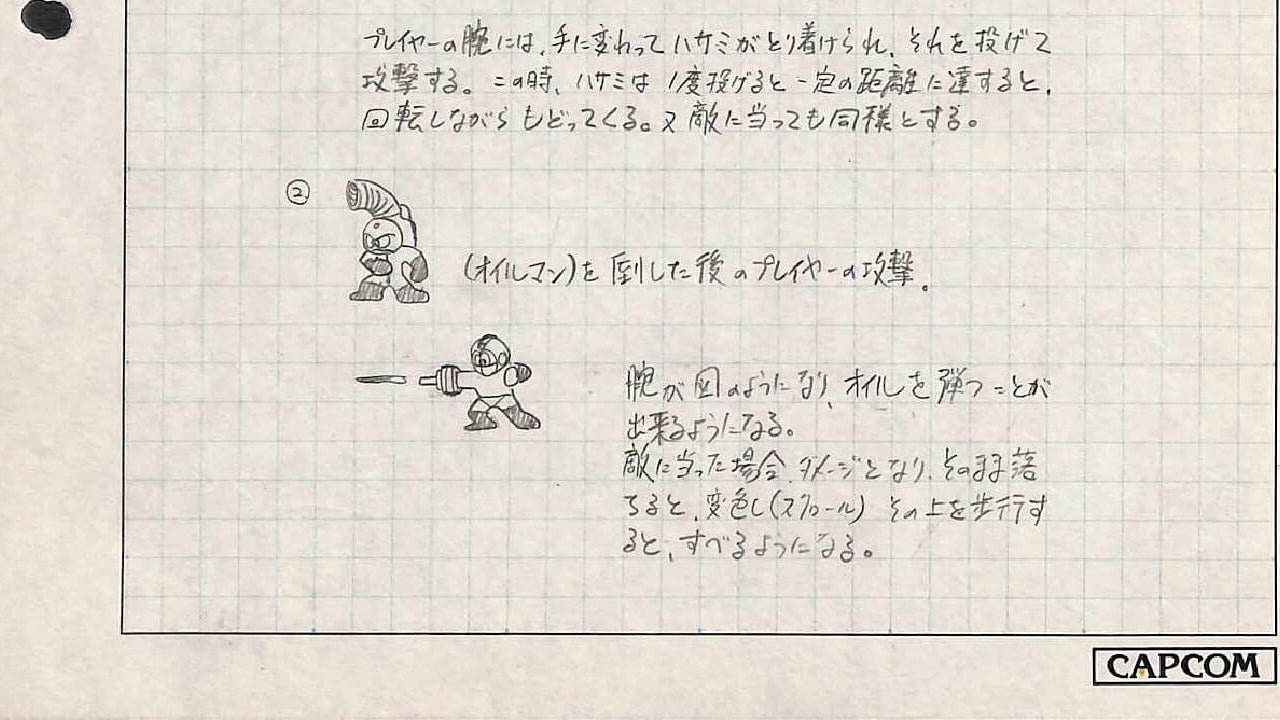
For a character that didn’t make the cut, Oil Man gets a fair bit of detail in these design document excerpts. Here, it seems like Oil Man’s attack would’ve come from a launcher on their back, which changed with his new design in the PSP game. You can also see that Mega Man’s cannon was supposed to change shape depending on what boss weapon he had equipped, an ambitious idea they never ended up using. (Instead he just changes different colours depending on equipped weapon.)
Items, enemies, or hazards?
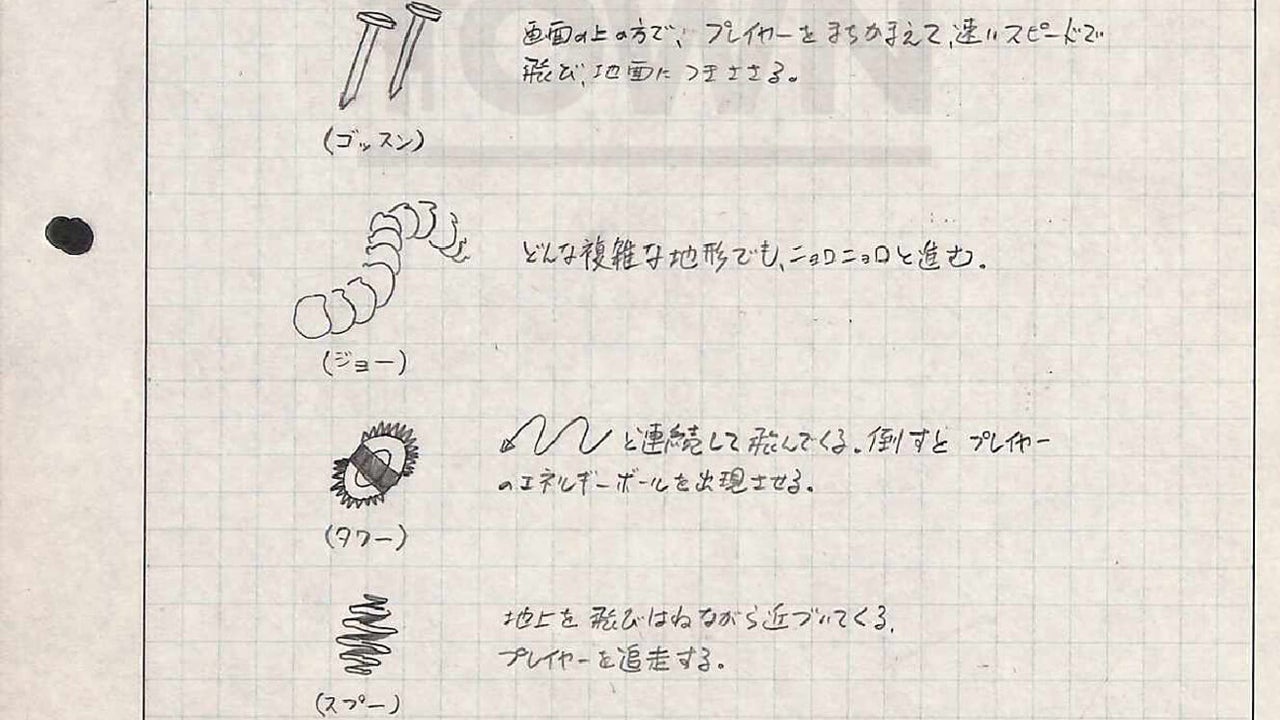
This is a bit of an odd one. It’s not clear what these are in the final game, but they do seem to be small-fry enemies or hazards of some kind.
Yep, those are Mega Man levels
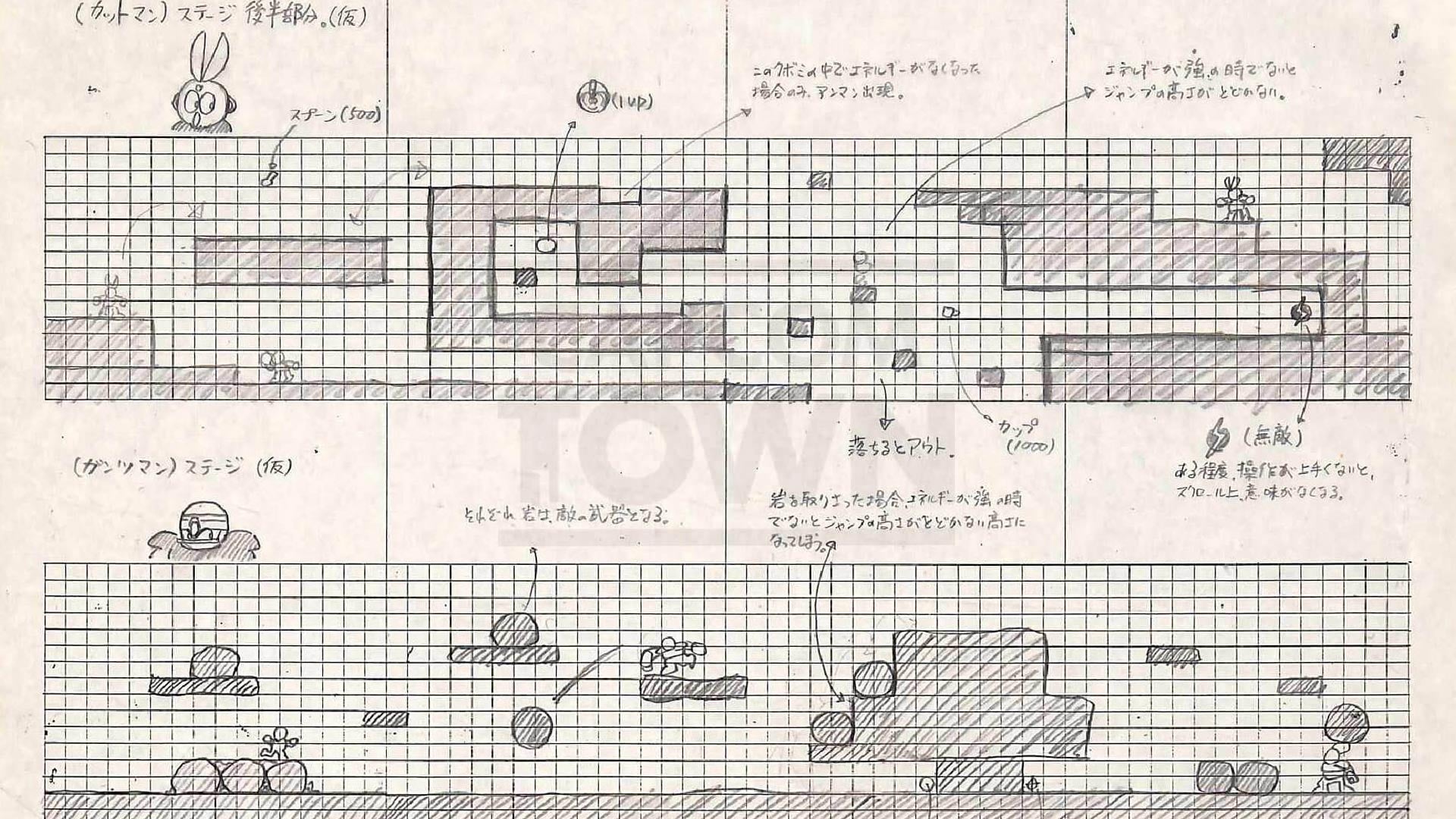
This part of the design document lays out various elements of a Mega Man stage, one for Guts Man, another for Cut Man. Guts Man’s seems to indicate moveable rocks that could vary up traversal across the screen. (And lookit that cute Cut Man in the corner.)
A busier stage select screen
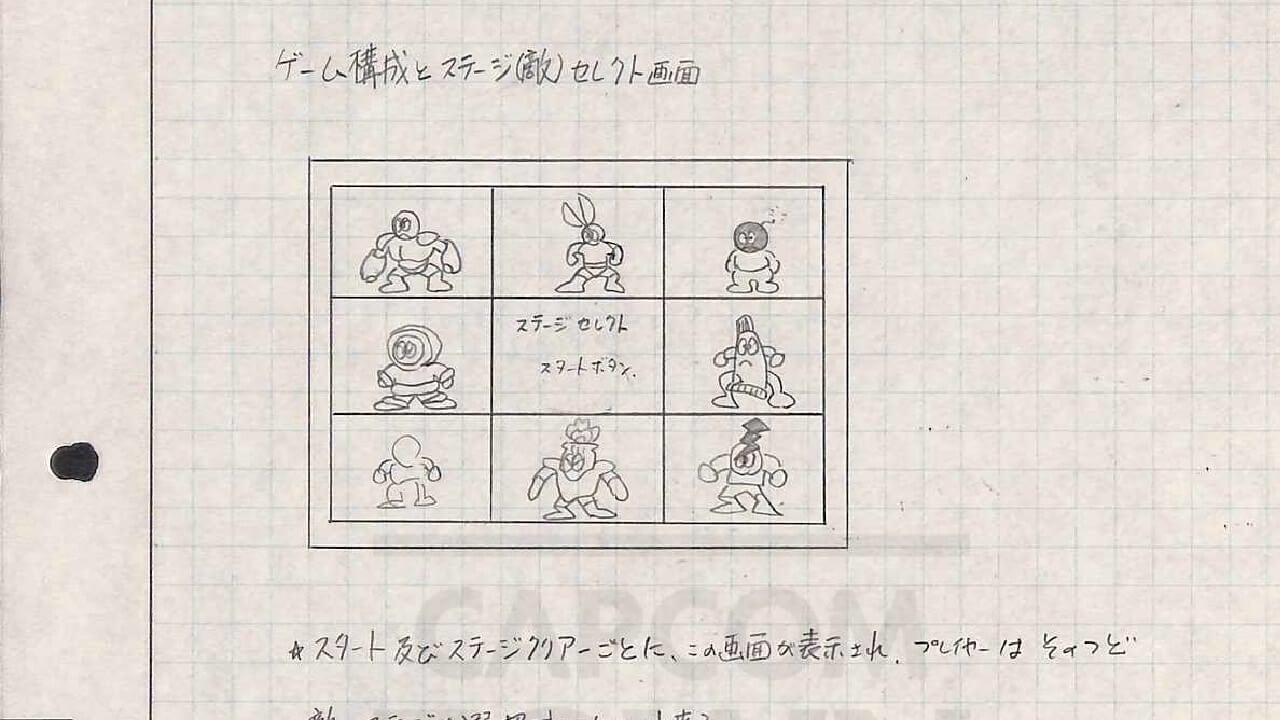
Here is the stage select screen, just a bit more packed than it is in the final game which only had six boss characters around the central square. The bottom text indicates that this screen would show up again after each stage. What’s the deal with the toothpaste-lookin’ guy in middle-row right?
Guts Man’s weapon was supposed to be less strange
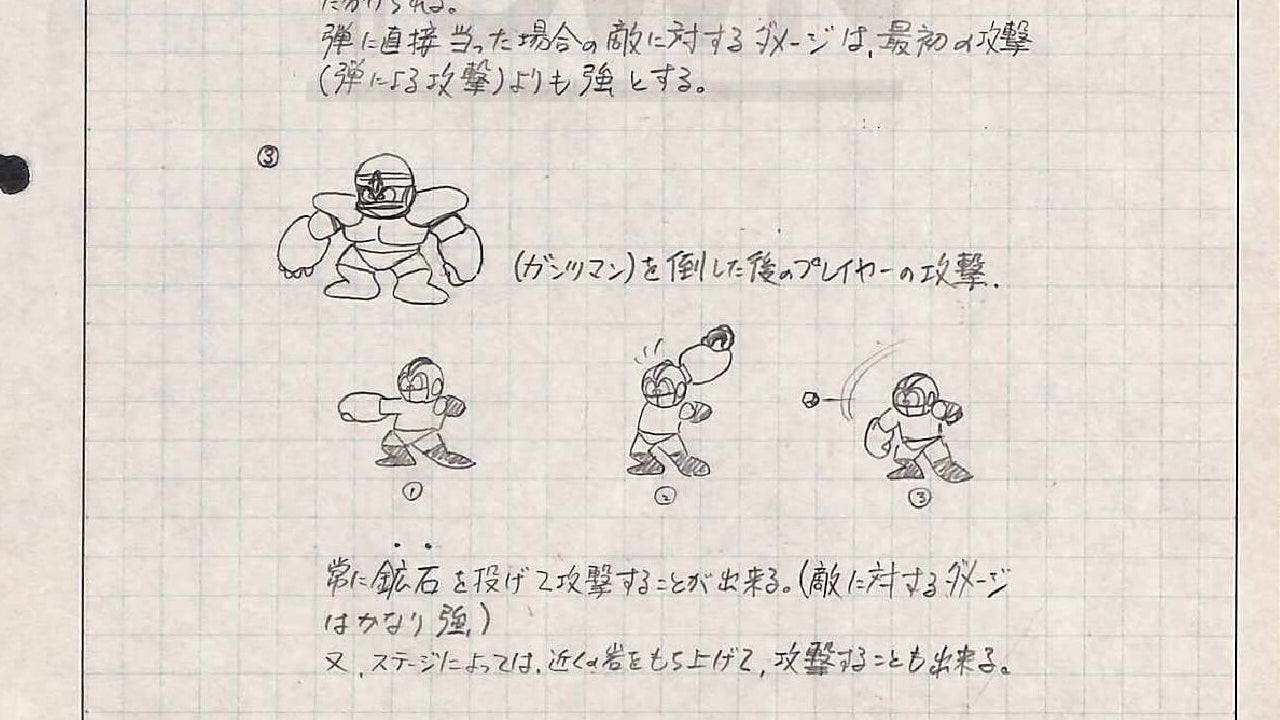
This part of the document details Guts Man’s weapon, which apparently had more features at this point. In the final game, Mega Man can lift rocks and throw them, but the catch was that the rocks had to already exist in the stage design. This page suggests that the original plan was for Mega Man to be able to throw an unlimited supply of smaller rocks when the boulders weren’t around. That would have made for a more typical boss weapon, because it’s pretty weird that Guts Man’s “weapon” is only usable in select parts of the final game, and is basically just Mega Man’s arm instead of a gun of some sort.
It’s always neat to get a look at a classic before it became a classic, and see what ideas didn’t make the final cut.
When Mega Man’s designers drafted these in 1987, they weren’t aware of the worldwide phenomenon Mega Man would go on to become. (Hell, they weren’t even aware after the release of this first game, which only performed modestly.) Hopefully Capcom will release more behind-the-scenes stuff like this in the future.
Read More: Mega Man Composer Manami Matsumae Doesn’t Miss The 9-6 Grind
By the way, we noticed Capcom Town also lets you play this first Mega Man right in your web browser. Good luck if you do — it’s a hard one.
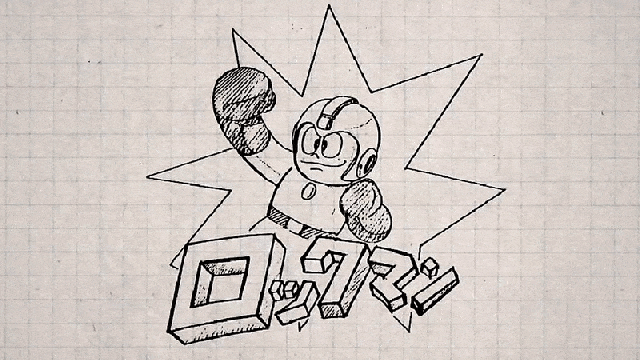
Leave a Reply